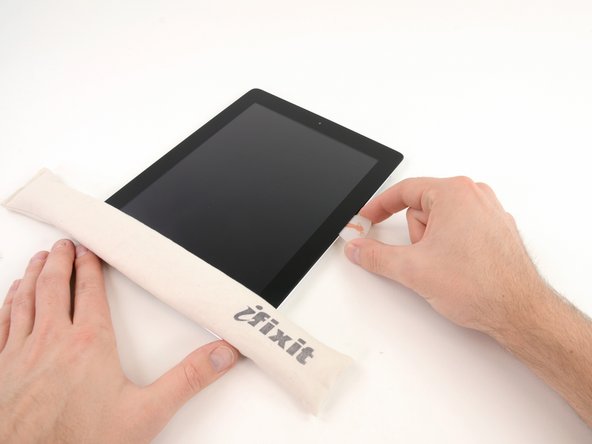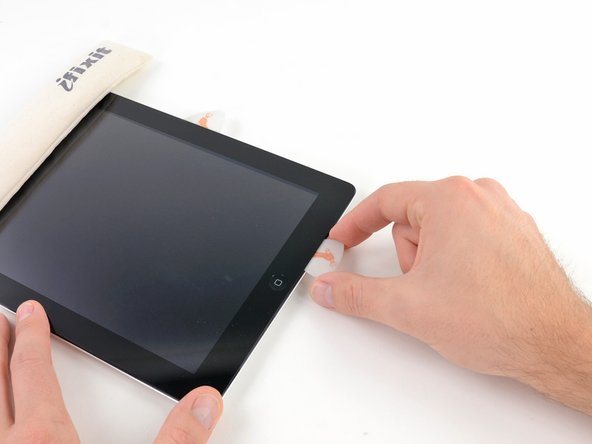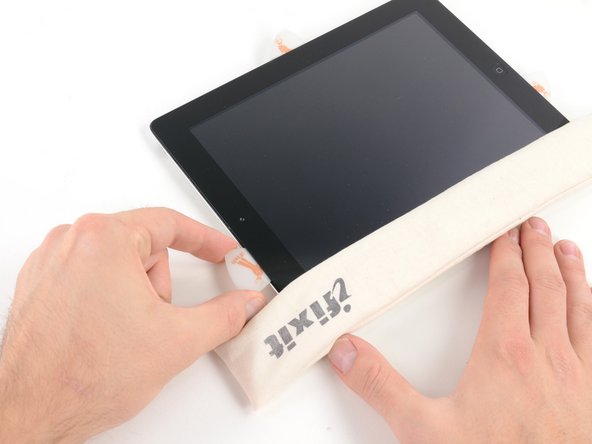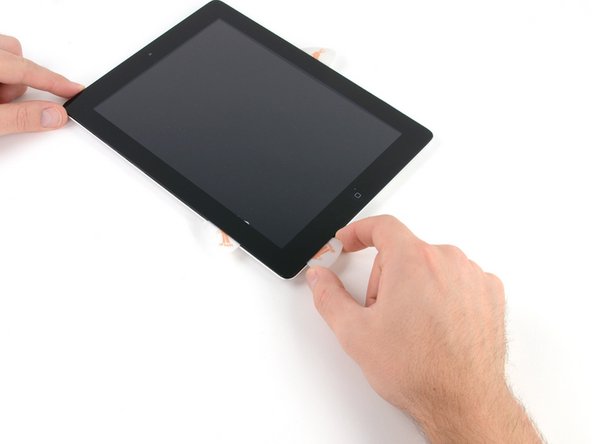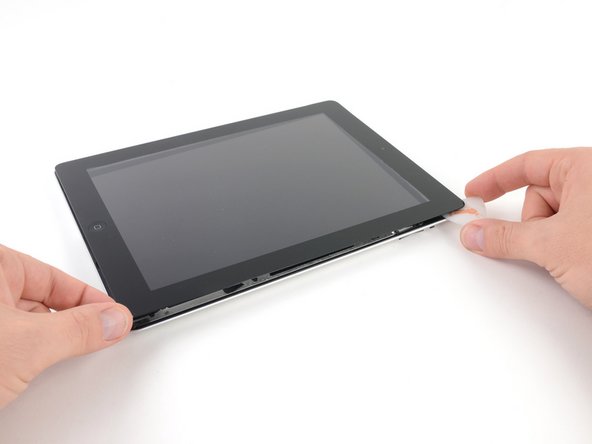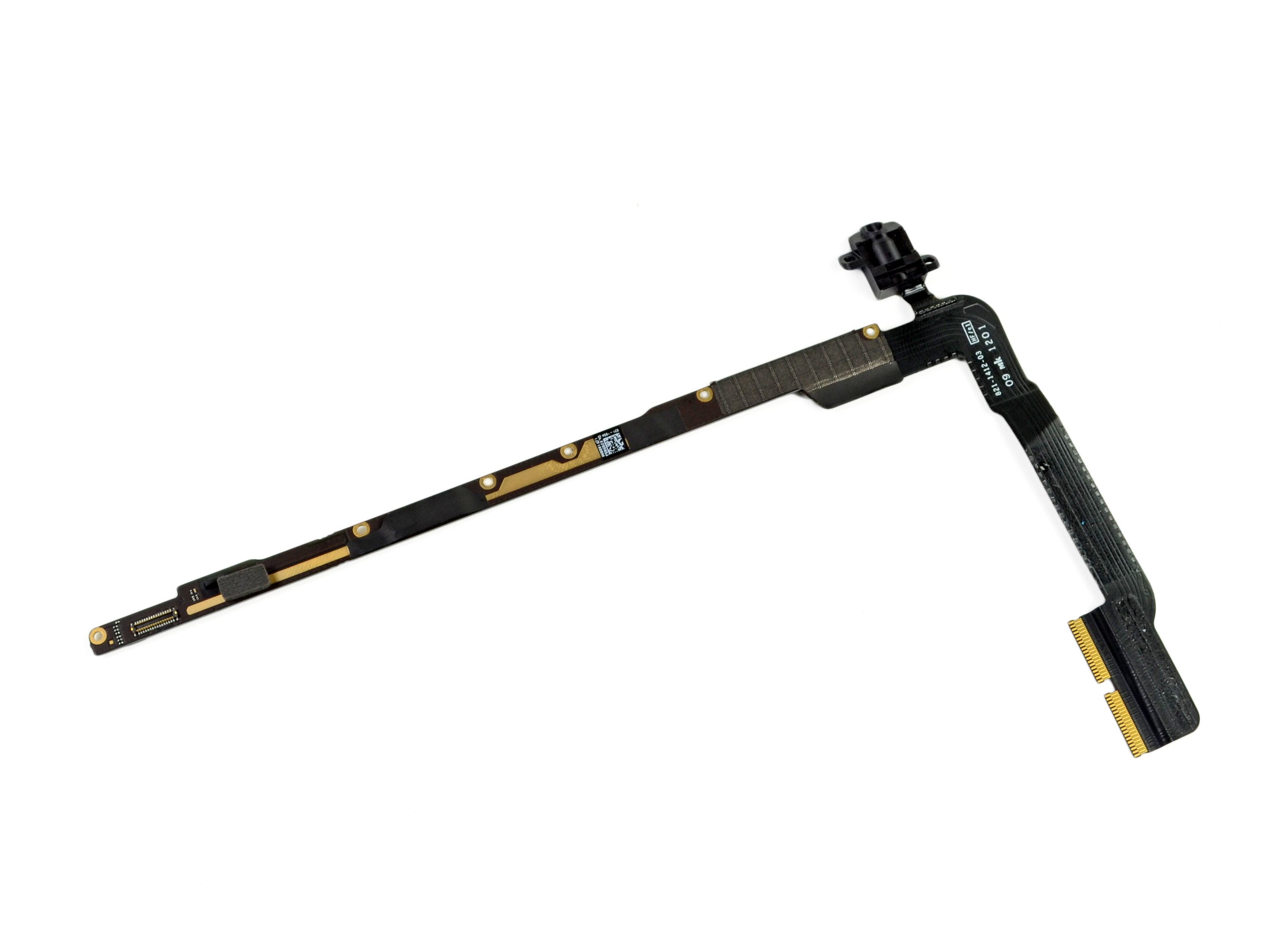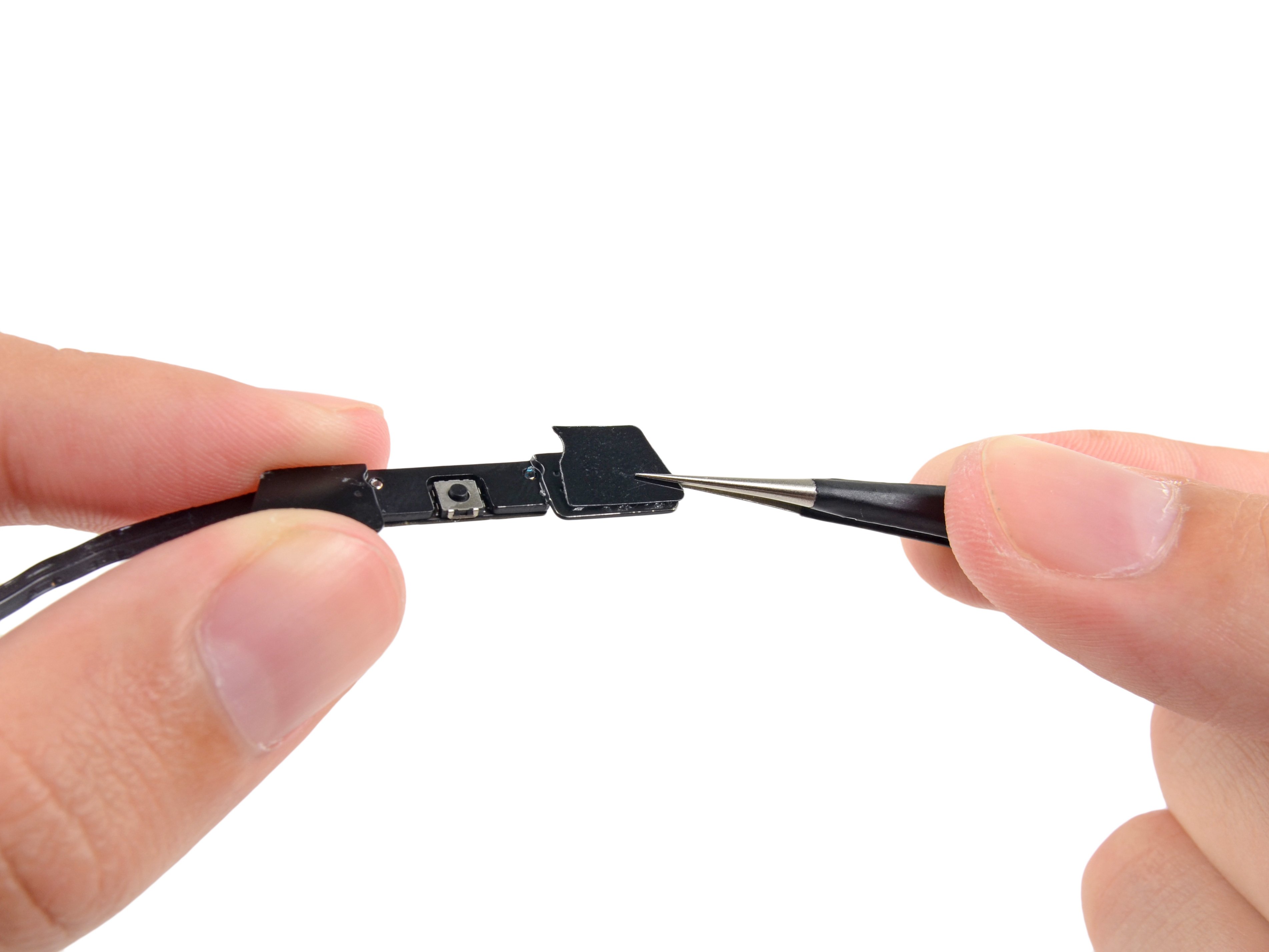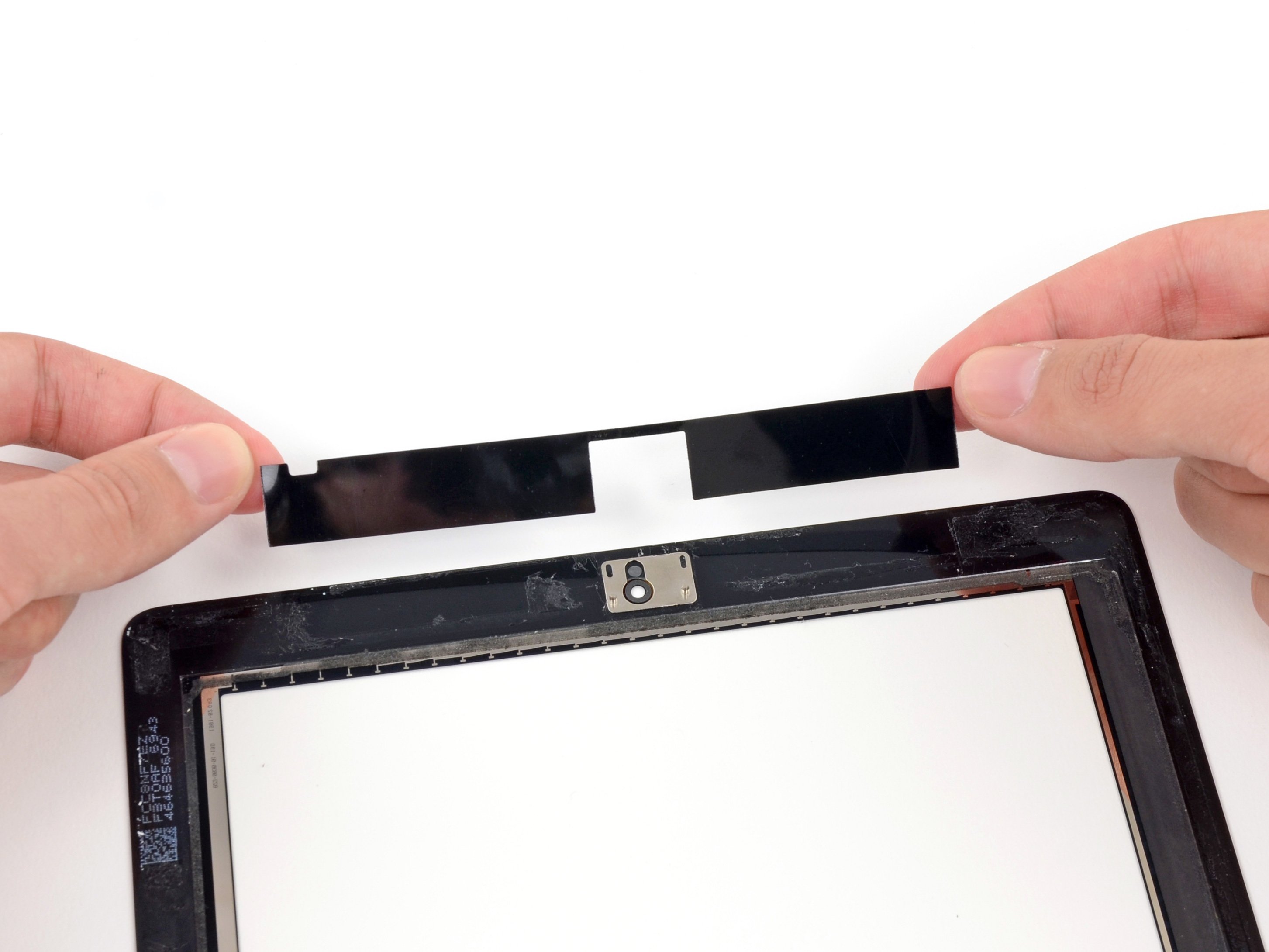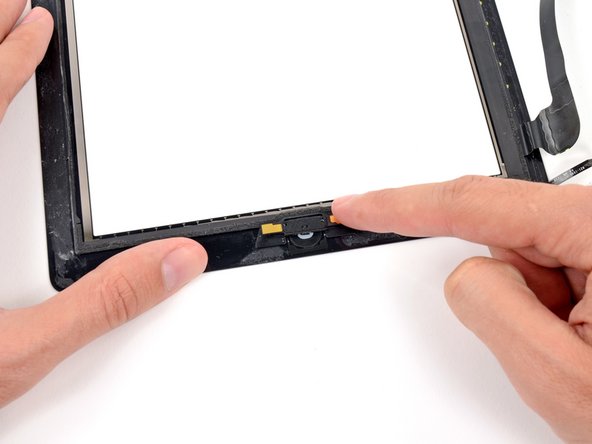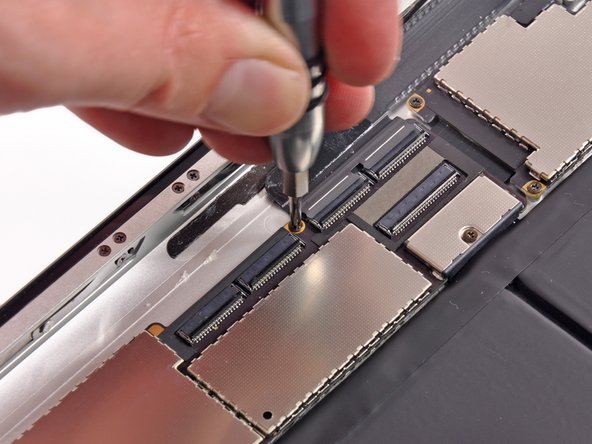Duration: 45 minutes
Steps: 47 Steps
Follow this clear, step-by-step guide to swap out the Lightning connector and get your device charging like new again.
Step 1
For carousel microwaves: Ensure that the plate is spinning like it’s on a dance floor! If your iOpener gets a little too cozy and gets stuck, it could overheat and cause some fiery trouble.
Before diving into the repair, it’s a good idea to give your microwave a little love and attention. A quick clean will prevent any sticky leftovers from getting cozy with your iOpener. Trust us, it’s worth the effort!
– Pop the iOpener right in the middle of your microwave for a quick warm-up.
Tools Used
Step 2
Keep an eye on that iOpener, and don’t let it get too hot – we’re aiming for cozy, not a disaster! No more than 100˚C (212˚F), please.
If the iOpener looks a bit puffy, give it some space. Just don’t touch it, okay?
If the middle of your iOpener is still too warm to handle, chill for a bit and let it cool down before giving it another heat-up. A properly heated iOpener stays toasty for up to 10 minutes.
Depending on your microwave’s power, you might need to adjust the heating time. The iOpener is ready to go when it’s just a smidge too hot to touch, so keep an eye on it!
– Give your iOpener a warm-up in the microwave for thirty seconds. It’s like a spa day for your tool!
– As you go through the repair, keep an eye on the iOpener. If it starts to cool off, pop it back in the microwave for another thirty seconds. Keep that warmth flowing!
Tools Used
Step 3
Heads up! The iOpener gets super toasty, so handle with care. Grab an oven mitt if you want to keep your fingers happy.
– Carefully take the iOpener out of the microwave, holding it by one of the flat ends to avoid touching the hot center. Safety first, always!
Tools Used
Step 4
Heads up! The iOpener gets super hot, so make sure to grab it only by the end tabs to keep your fingers happy.
Don’t have a microwave? No worries! Just pop your iOpener in some boiling water to get it nice and warm.
– Grab a pot or pan and fill it with enough water to cover your iOpener completely.
– Bring the water to a boil, then switch off the heat.
– Drop your iOpener into the hot water and let it soak for 2-3 minutes, making sure it’s fully underwater.
– Use tongs to carefully fish out the warm iOpener from the water.
– Give it a good dry-off with a towel so it’s ready to go.
– Your iOpener is all set! When it cools down, just repeat the heating process to get it back to working temp.
Tools Used
Step 5
Pop on some safety glasses to keep those peepers safe, and handle the LCD screen with care to avoid any oops moments.
This will help keep those pesky glass shards under control and give your display the sturdy support it needs while you’re prying and lifting it up.
– Got a cracked display glass? Keep those shards in check and avoid any ouch moments by taping over the glass before you start.
– Cover the iPad’s screen with overlapping strips of clear packing tape until the entire front is wrapped up nice and neat.
– Stick to the guide as best as you can, but heads up: once that glass is broken, it might keep cracking as you work. You might have to carefully use a metal prying tool to scoop out the glass pieces.
Step 6
Just a friendly reminder: while you’re diving into this repair, you might encounter some pesky broken glass. So, slip on those safety glasses to keep your peepers safe from any unexpected flying shards. You’re doing great!
– Place the iOpener evenly along the right edge of the iPad, pressing it down so it makes solid contact with the surface.
– Let it chill there for about 90 seconds to warm things up before you try popping open the front panel.
Tools Used
Step 7
Getting the tip of your opening tool wedged between the glass and plastic might take a little muscle. Take your time, be patient, and gently wiggle the tool back and forth to ease it in without any drama.
– Hey there! Check it out: there’s a little gap in the adhesive ring of your iPad, right in the upper right corner—about 2.0 inches (~5 cm) from the top. Let’s take advantage of this little opening!
– Now, let’s get to work! Line up your tool with the mute button and gently slide the tip of a plastic opening tool into that gap between the front glass and the plastic bezel. Just insert the very tip—enough to give that crack a little nudge!
Step 8
– Be sure to tuck that tool right where it belongs—safely nestled between the plastic display bezel and the front panel glass. You’ve got this!
Step 9
– With the plastic opening tool snugly wedged between the front glass and plastic bezel, gently slide a plastic opening pick into that little gap, right alongside the tool you’ve just set up. You’re doing great!
Step 10
– Carefully pull out the plastic opening tool from the iPad, then slide the opening pick a bit deeper under the front glass—about half an inch—to keep things moving smoothly.
Step 11
– As you carefully loosen the adhesive along the right edge of the iPad, pop that iOpener back in the microwave to warm it up again, then place it neatly on the bottom edge to keep things nice and toasty.
Tools Used
Step 12
The adhesive is super sticky, so you might need to put in a bit of elbow grease. Just take your time and stay cool!
If you spot the opening pick just under the front glass, gently pull it out a bit. Going this deep with the pick won’t hurt anything, but you might end up with some sticky residue on the LCD. Keep it light and steady!
– While you’re warming up the bottom edge with the iOpener, it’s time to tackle that pesky adhesive on the right edge of the iPad. Let’s get it unstuck!
– Gently glide the opening pick down the edge of the iPad, making sure to release that stubborn adhesive as you go. You’re doing great!
Tools Used
Step 13
You might want to slide that heated iOpener back to the right edge of the iPad as you peel away the adhesive. This little shuffle depends on how long the iPad has been cooling off while you’ve been busy working your magic.
– If the opening pick gets a little stuck in the adhesive, gently roll it along the edge of the iPad to keep loosening that sticky stuff.
Tools Used
Step 14
– Before you pull out that first opening pick from the bottom corner of your iPad, slide a second pick under the right edge of the front glass to keep the adhesive from sticking back together.
– Reheat the iOpener and move it over to the top edge of the iPad to keep things nice and warm.
Tools Used
Step 15
Hey there! Just a friendly heads-up: the Wi-Fi antenna is snugly attached to the bottom right edge of the iPad’s rear case with screws and a cable. Given its position, it’s super important to handle it with care – a little mishap could lead to some serious damage to the Wi-Fi antenna. Let’s keep it safe and sound!
– Heads up! The next steps call for some serious care and attention.
– You’ll need to gently loosen the adhesive holding the antenna to the front panel without messing up the delicate connections down by the bottom of the iPad. Take it slow and follow along closely.
Step 16
Keep the pick from sliding past the bottom right corner — going further might mess up the Wi-Fi antenna, and we don’t want that!
– Gently slide the opening pick around the bottom right corner of the iPad to loosen the adhesive hiding out there.
Step 17
Carefully slide the opening pick along the bottom right edge of the front panel. Watch out for the Wi-Fi antenna near the corner—it’s super close and can be easily nicked if the adhesive is released the wrong way.
Just a friendly reminder: don’t yank that pick all the way out from under the front glass! Give it a little tug so that about 1/8″ (3 mm) of the tip stays snugly tucked underneath. You’ve got this!
– Gently glide the edge of your opening pick along the bottom of the iPad to free up the adhesive around the Wi-Fi antenna. You’re doing great!
Step 18
– Once you’ve moved past the Wi-Fi antenna (about 3″ (75 mm) from the right edge, or just beside the home button), slide the opening pick all the way in, reaching its full depth.
– Now, gently slide the pick to the right, loosening the adhesive that’s holding the Wi-Fi antenna to the front glass.
– The antenna is secured to the bottom of the iPad with screws and a cable. This step safely detaches the antenna from the front panel, ensuring it stays intact when you remove the panel. No damage here!
Step 19
Keep the iOpener’s heating sessions to just a minute at a time, and give it a cool-down break of at least two minutes before you heat it up again. Safety first, and we want to keep things running smoothly!
If the adhesive near the bottom edge feels a bit chilly, just give the iOpener another warm-up to soften it back up where you’re working.
– Keep sliding the opening pick along the bottom edge of the iPad, carefully threading it around the home button. Once past the button, wiggle the pick back in about half an inch (10 mm) to keep that adhesive in check.
Tools Used
Step 20
For iPad 4 models, be sure to insert the pick no deeper than 1/2 inch (10 mm) in this area to steer clear of accidentally damaging that delicate home button ribbon cable. Take it slow and steady!
– Keep peeling away that adhesive all along the bottom edge of the iPad like a pro.
– Slide the opening pick under the front glass near the home button and let it chill there.
Step 21
– Warm up the iOpener in the microwave, then place it on the left edge of the iPad to gently heat the adhesive in that area.
Tools Used
Step 22
If the adhesive has gotten too chilly, just pop the iOpener back on the top edge and keep at it. If the iOpener itself has lost its warm mojo, give it a quick heat-up and you’re good to go.
– Gently slide the opening pick along the top edge of your iPad. Give it a little tug to slide it around the front-facing camera bracket.
– This section is pretty sticky, so you might need to apply a bit of muscle. Just take your time and be careful—no rush, we don’t want any accidents or iPad injuries.
– If the pick starts to get stuck in the adhesive, try ‘rolling’ it as shown in step 9. It should help it move more smoothly.
Tools Used
Step 23
If the adhesive feels nice and toasty, go ahead and take that iOpener off the iPad for a smoother experience. But if it’s still holding on tight, give the iOpener another quick heat-up and place it on the left edge while you tackle the task at hand.
– Keep peeling away that stubborn adhesive along the top edge of your iPad, and gently maneuver the opening pick around the top left corner. You’re doing great!
Tools Used
Step 24
The digitizer cable is about 2 inches (50 mm) up from the bottom of the iPad. Ease up on your pick around 2.25 inches (60 mm) from the bottom to avoid any mishaps. You’re almost there!
– Gently slide the opening pick along the left edge of the iPad. As you do, it will slowly break free from the adhesive, but take it easy—the adhesive here is a bit thinner because of the digitizer running all along that side. Keep the pick shallow (no deeper than 1/2 inch or 10 mm) so you don’t accidentally damage anything sensitive like the digitizer.
Step 25
Heads up! The bottom of the digitizer cable is just about an inch (25 mm) from the iPad’s bottom edge. Take it slow and steady to avoid cutting this little guy!
– With the opening pick still nestled under the iPad’s bottom edge, gently loosen the adhesive at the bottom left corner. Nice and steady—this part’s a little sticky, but you’re doing great!
Step 26
The adhesive around the edge of the iPad might have re-stuck itself. If that’s the case, gently slide a pick under the area where the front glass is still holding on, and carefully ‘cut’ through the adhesive.
– Grab one of those nifty opening picks and gently lift up the bottom right corner of the iPad. Once it’s popped up, use your fingers to hold it in place like a pro!
Step 27
Watch out for any sticky adhesive that might still be lurking around! Grab an opening pick and gently slice through any stubborn glue that could be keeping the front panel in place. You’ve got this!
– Grab the iPad by the top and bottom right corners and gently swivel the front glass away from the device.
– When putting everything back together, give the LCD a quick once-over with a microfiber cloth and some compressed air to zap away any dust or fingerprints before snapping the glass back on.
Step 28
That bottom left screw is playing peekaboo behind the home button ribbon cable connector. Gently nudge the ribbon cable out of the way so you can grab that sneaky screw and remove it.
– Take out the four 2 mm Phillips #00 screws that are keeping the LCD snug in the aluminum frame. A little twist and they’ll be free!
Step 29
Handle the LCD with care, folks! That ribbon cable is delicate and could snap if it’s bent too much. Keep it gentle and you’ll be golden!
– Grab a plastic opening tool or a spudger and gently pry up the right edge of the LCD from the iPad.
– Swing the LCD up and around its left edge, then carefully set it down on top of the front glass panel.
Tools Used
Step 30
– Gently use the tip of your spudger to lift that little tape shielding the LCD ribbon cable connector. Easy does it!
Tools Used
Step 31
– Lift the retaining flap on the LCD ribbon cable ZIF connector with a gentle touch.
– With your fingers or a trusty pair of tweezers, carefully pull the LCD ribbon cable out of its socket on the logic board.
Tools Used
Step 32
– Carefully lift the LCD off the front panel without touching the screen side—treat it like a delicate dance move.
Step 33
If you spot any electrical tape covering the Wi-Fi antenna, speaker cable, or home button ribbon cable, go ahead and peel it off gently.
Step 34
– Gently lift the little flap on the home button ribbon cable’s ZIF connector to unlock it.
Step 35
– Grab your trusty tweezers and gently pull the home button ribbon cable straight out of its cozy little socket on the logic board. You’ve got this!
Tools Used
Step 36
– Gently wiggle the home button ribbon cable out from its cozy little spot in the rear case.
Step 37
– Grab your trusty tweezers and gently lift the tape holding the digitizer ribbon cable to the logic board. Take it slow and steady!
Tools Used
Step 38
– Gently lift the retaining flap on both digitizer ribbon cable ZIF connectors to unlock them.
Step 39
– Gently slide the flat end of your spudger under the digitizer ribbon cable to break up the sticky adhesive holding it down.
– Carefully pull the digitizer ribbon cable straight out from its connectors on the logic board—no wiggling dance moves needed!
Tools Used
Step 40
– Gently peel back the digitizer ribbon cable, then use the flat end of a spudger to carefully pop loose the adhesive holding the cable to the back aluminum case.
Tools Used
Step 41
– Gently wiggle the digitizer ribbon cable out from its snug spot in the aluminum frame using just your fingers.
– Carefully lift the front panel away from the iPad.
Step 42
If it’s there, go ahead and peel off that piece of electrical tape that’s hiding the Lightning connector cable. You’ve got this!
Step 43
– Grab the flat end of your spudger and gently work the plastic spacer away from the rear case.
– Lift the plastic spacer off the iPad and set it aside.
Tools Used
Step 44
– Unscrew the two 2.9 mm Phillips #00 screws holding the Lightning connector to the back case—time to loosen those tiny bolts and make some space!
Step 45
– Gently use the flat end of a spudger to lift the Lightning connector cable straight up and out of its socket on the logic board.
Tools Used
Step 46
– Gently use the flat end of a spudger to lift the Lightning connector cable away from the aluminum frame. Take your time, and remember, every little bit helps in this journey!
Tools Used
Step 47
– To put your device back together, simply retrace your steps in reverse and check out our guide with the iPad 4 Wi-Fi Front Panel Adhesive strips to help you reattach that front panel like a pro! If you hit a snag, remember, you can always schedule a repair.
Success!
























